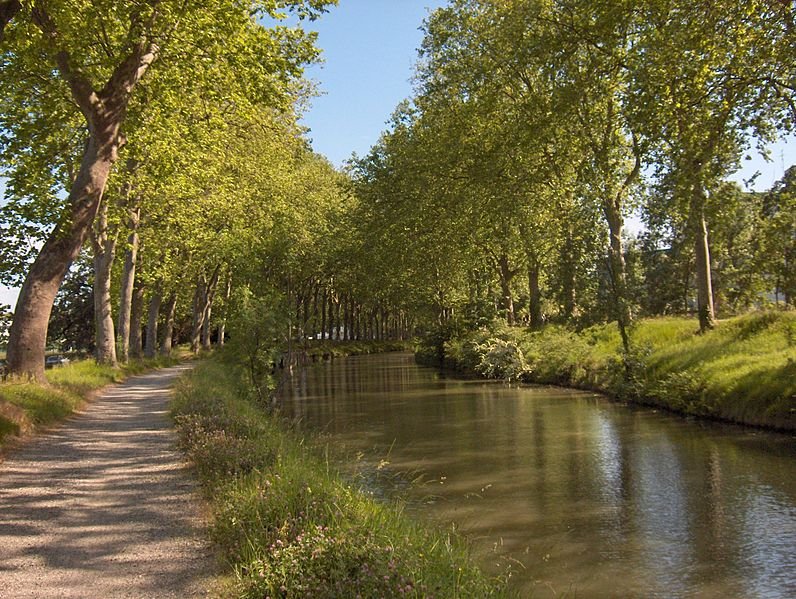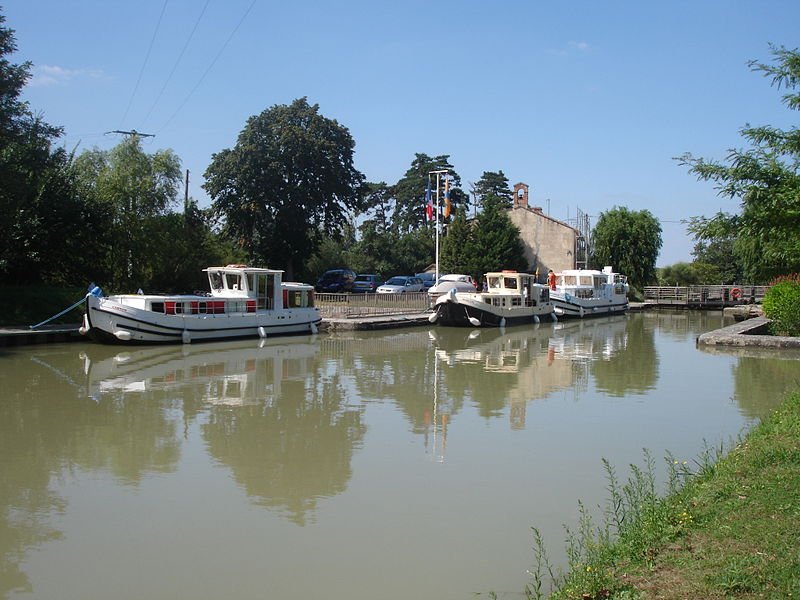 Canal du Midi
Canal du MidiSource: https://commons.wikimedia.org/wiki/File:20050520_Jaune-Vert.jpg
Author: Nicolas

Canal du Midi is a 240-km (150-mile) canal in Southern France, connecting the Garonne River to the Éltang de Thau on the Mediterranean. It also joins the Canal de Garonne to form the Canal des Deux Mers (Canal of Two Seas) linking the Atlantic Ocean to the Mediterranean Sea.It was dug in the 17th century so that ships have safe and shorter passage between these two bodies of water, and at the same time, avoiding encounters with Barbary pirates.
The idea of digging such a canal goes back to the 16th century when King Francis I invited Leonardo da Vinci over to France in 1516 to look into the possibility of creating a canal from Toulouse to Carcassonne. The challenge faced by the planners was to find a solution to supply water to the elevated sections of canal. A hundred and fifty years were to pass before Pierre-Paul Riquet, a rich tax-farmer from Languedoc, solved the problem. To show how his design works, he built a miniature at his home, complete with locks, weirs and feeder channels.
Nineteen years were to pass before the Canal du Midi was completed in 1681. At the height of construction, over 12,000 laborers worked on the project. It was officially opened on 15 May, 1681, and was known as Canal Royal de Languedoc. Unfortunately Riquet passed away in 1680, a year before the canal's completion. His sons inherited the canal, but it did not repay the debts incurred for its construction until over a hundred years later.
Canal du Midi was inscribed as a World Heritage Site during the 20th session of the World Heritage Committee in Merida, Mexico on 2-7 December, 1996.
 Canal du Midi at Port de Négra
Canal du Midi at Port de NégraSource: https://commons.wikimedia.org/wiki/File:France_Canal_du_Midi_Port_de_N%C3%A9gra1.jpg
Author: Pinpin

World Heritage Site Inscription Details
Location: N 43 36 41 E 1 24 59Inscription Year: 1996
Type of Site: Cultural
Inscription Criteria: I, II, IV, VI
 Latest updates on Penang Travel Tips
Latest updates on Penang Travel Tips

Copyright © 2003-2025 Timothy Tye. All Rights Reserved.

 Go Back
Go Back